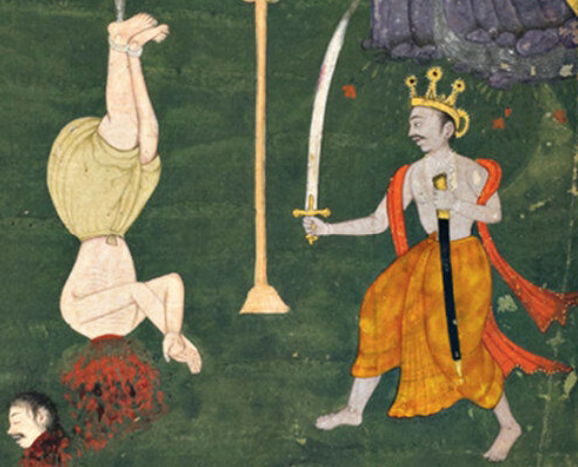Demystifying “Śhambūka Vadh” to crumble down sham narratives.


“Jai Shree Ram” has become a slogan of Bharat in the journey of Decoloniality she has embarked, therefore there are efforts being made from the other side of the political spectrum to paint the character of Prabhu Shree Ram with a black brush. Though these efforts to put a black mark over Bhagwan Shree Ram is not a recent development but these kinds of efforts are rising in geometric progression in 4-5 years. Some of the favourite topics of Adharmis to pointed out at Prabhu Shree Ram lie in Uttarkand of Ramayana. These include Tyag of Ma Sita by Prabhu Shree Ram and Śhambūka Vadh. The reason why Prabhu Shree Ram had to abondon Ma Sita is quite clear in public domain. But the story of Śhambūka Vadh is not often discussed in the public domain, and therefore Adharmis get an empty road to accelerate their sham propaganda.
Adharmis claim that Bhagwan Shree Ram killed Sambhuka for being a Shudra and because he performed Tapas. This claim does not hold a single mole of truth. Prabhu Shree Rama did not kill a Shudra. Rama killed a demon who was the cause of deaths of several children due to his dark penance. He was a demon reincarnate who wished to acquire the seat of Rudra and such a man deserves nothing but death. Krishna explains what dark penance is, the penace performed by foolish notions that include torturing the self or others, is called dark penance (Tamas Tap). Shambuka was clearly hanging upside down above a fire burning himself and torturing one’s self. This is never encouraged. Ramayana mentions Shambuka performing extreme austere penance and also is for negative purposes hence it is Tamasa tapas. (Credit- @kaundabhatta).
Many a times Hindus use defensive approach and try to dodge the questions of Adharmis regarding “Śhambūka Vadh” by sidelining the entire Uttarkand and calling it an Interpolation but this dodging mentality won’t work for Dharma because Uttarkand being part of Ramayana is widely accepted in unwashed parts of Bharat. Therefore the truth of “Śhambūka Vadh” needs to be spoken loud and clear and therefore sidelining Sambhuka Vadh is not a solution but tackling fake narrative through knowledge is the one.
DISCLAIMER: The author is solely responsible for the views expressed in this article. The author carries the responsibility for citing and/or licensing of images utilized within the text.
